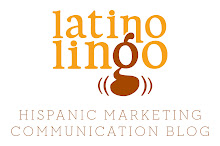"When it comes to being healthy, Hispanics have several things going against them: language and cultural barriers, lack of access to preventive care and lack of health insurance. But there is another, lesser-known barrier that prevents them from living healthier lives: lack of online health information in Spanish." So says Lee Van in his
MediaPost article about the lack of Spanish-language health content.
In the past 12 months, usage of health websites skyrocketed among the bilingual and Spanish-preferring online Hispanics. As a result, more than half of all online Hispanics visits a health site each month.
Growth in health site visitation by segment September 2010 - 2011
English Preferring: 25%
Bilingual: 47%
Spanish Preferring: 35%
All Hispanics: 32%
Percent of given segment that visited a health site in September 2011
English Preferring: 53%
Bilingual: 52%
Spanish Preferring: 51%
All Hispanics: 52%
This article ties back to what I wrote about in January 2010 after the release of the
AOL Cyberstudy, which pointed out that Hispanics recognize the disparity between the availability of English and Spanish-language content. They perceive English sites as more comprehensive in part because they know the Spanish content is not.
Further, the study showed that Hispanics often prefer English content and mistrust Spanish content because Spanish-language sites are often little more than literal translations of English content. In fact, only 3% of respondents found Spanish sites more trustworthy and useful than those in Spanish.
The only way to overcome this challenges is to offer relevant, comprehensive and trust worthy health information in Spanish. As Lee points out at the end of his article, there is a clear demand for Spanish language health information online and relatively few companies providing it.
Labels: Hispanic communication, Hispanic disparity, Hispanic Internet, Hispanic marketing, Hispanic online advertising, internet, Latino Cultural Identity, transcreation



